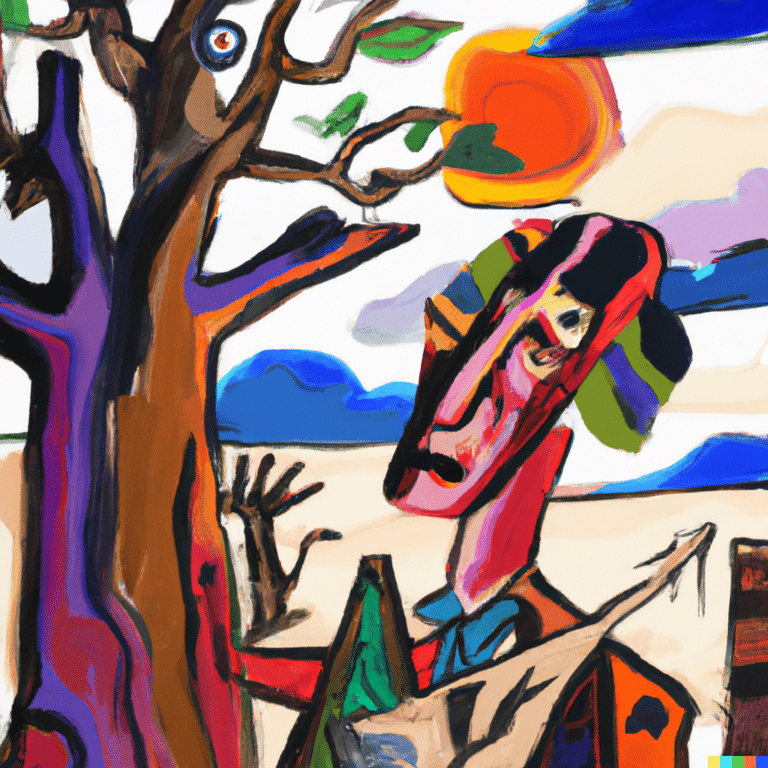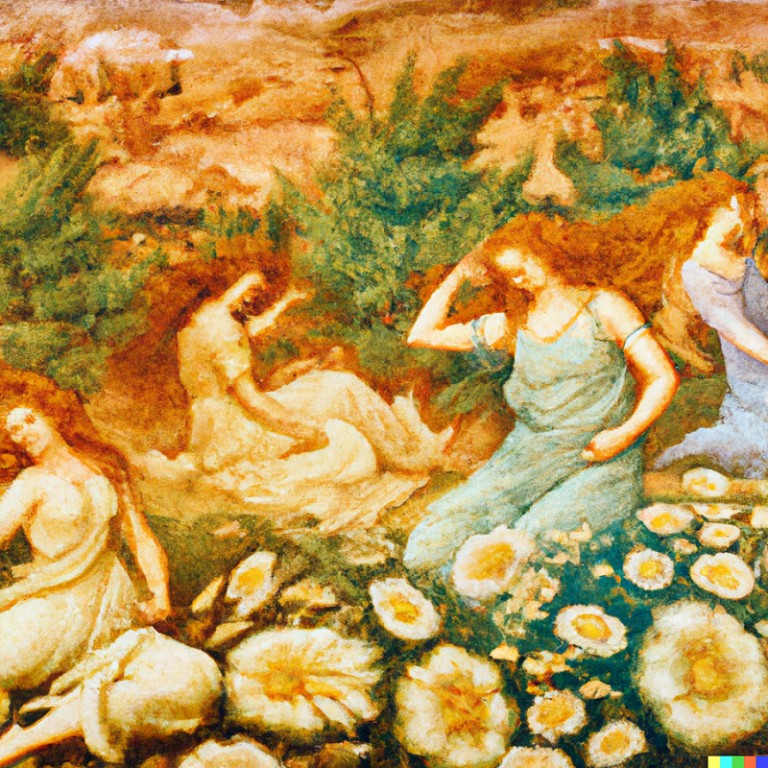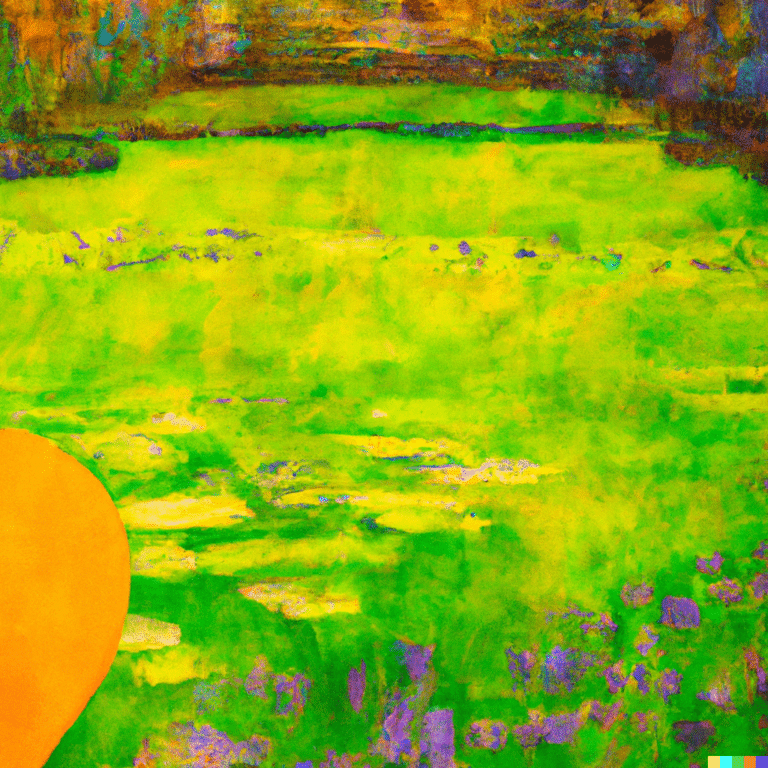
ImaginationVincent Van Gogh, the famous Dutch painter, could have imagined a painting that depicts the impact of the worsening ozone hole in its characteristic post-impressionist style. This painting would be both a powerful and stimulating representation of the beauty and fragility of the Earth’s natural systems, and a reminder of the importance of acting to protect the ozone layer and the planet.
Sometimes compared to a shield protecting the Earth from the harmful ultraviolet (UV) radiation emitted by the sun, the ozone layer is essential to life on Earth. However, climate change and the emission of certain compounds into the atmosphere pose a threat to the atmosphere.
The ozone hole is a phenomenon that refers to the depletion of the ozone layer, a protective layer located in the Earth’s stratosphere. It results from the release of certain chemicals of human origin, such as chlorofluorocarbons (CFCs) and halons. This phenomenon is considered a tipping point in the Earth’s climate system.
The presence of this hole is not without consequences, on the contrary, there are a number of significant impacts, both on human health and on the environment.
For example, it can lead to an increase in skin cancers in humans, then exposed to too high levels of UV radiation, as well as eye and immune disorders. For the environment, it is terrestrial and marine ecosystems that are directly affected by the increase in UV radiation, affecting the growth and reproduction of plants and animals.

The decline of the Amazon rainforest by Pablo Picasso
Also known as the «lung of the Earth», the Amazon forest has been in the throes of a gradual decline for many years.Considered an essential element of the Earth’s climate system, the Amazon rainforest plays a crucial role in regulating the global climate. By absorbing the carbon dioxide present in the atmosphere and releasing oxygen, it is part of the various terrestrial carbon sinks, which is fundamental to preserve.
A reservoir of biodiversity and the world’s largest rainforest, home to millions of plant and animal species, it also contributes to maintaining the planet’s ecological balance. It is an entire ecosystem that is directly threatened with extinction if nothing is done.
The decline of the Amazon rainforest stems from the combination of different human activities such as mining or oil, intensive agriculture, dam construction, deforestation and more generally, climate change. This phenomenon is called the decline of the Amazon rainforest. It highlights the devastating impact of human activities on the Earth’s climate.
In this context, the famous painter Pablo Picasso could have imagined a painting describing the chaotic and destructive consequences of this tipping point, thanks to his characteristic cubist style.

The aridification of the Mediterranean region illustrated by Botticelli
Gradually becoming semi-arid, the hydrological systems of the Mediterranean region are undergoing major upheavals. Water resources are dwindling and communities are struggling to adapt to the new challenges of a much drier environment.
In addition to these social issues, climate change also has an impact on the region’s biodiversity. Plant and animal species, adapted to cooler and humid climates, are now threatened, while new species are adapting to more arid conditions. This disrupts the complex and balanced ecosystems that have evolved over millennia, resulting in a loss of biological diversity and altered essential ecological interactions.
In this striking work by Botticelli, four women stand amidst a dry and arid landscape, symbolizing the impact of climate change on the Mediterranean regions. The women stand among sparse vegetation, their floating garments blending with the tones of the earth. In the distance, a dried-up riverbed is a dark testimony to the scarcity of water resources. Through this representation, the emphasis is placed on the need for urgent action and the establishment of sustainable practices, to address the effects of climate change, and preserve the biodiversity and cultural heritage of the region.

The greening of the Sahara by Claude Monet
The Sahara, one of the driest regions on the planet, could see its sandy expanses replaced by growing vegetation. The cause? Climate change.
In the tropics, precipitation originates from convective phenomena, i.e. thunderstorms. With current climate change, temperatures in the tropics are set to rise, shifting thunderstorms to higher latitudes. As a result, rainfall in the southern Sahara will intensify, boosting vegetation growth and transforming this dry, arid region into a green zone. This phenomenon is known as the “greening of the Sahara”.
While it’s easy to believe that there are no negative aspects to this phenomenon, there is one. Tropical zones could become hotter and wetter, making them inhospitable to the people who live there, and encouraging waves of migration.
French Impressionist painter Claude Monet is renowned for his stunning landscapes that capture the beauty and serenity of nature. He is often associated with his series of water lily paintings and the countryside around his home in Giverny.
But in this imagined painting, Monet would depict a very different landscape, transformed by climate change. The painting shows the Sahara desert landscape, once barren, now lush and verdant, with trees and vegetation flourishing. Monet’s characteristic style would bring a sense of nostalgia and familiarity to the painting, but the subject would be a powerful reminder of the impact of climate change on our planet.




